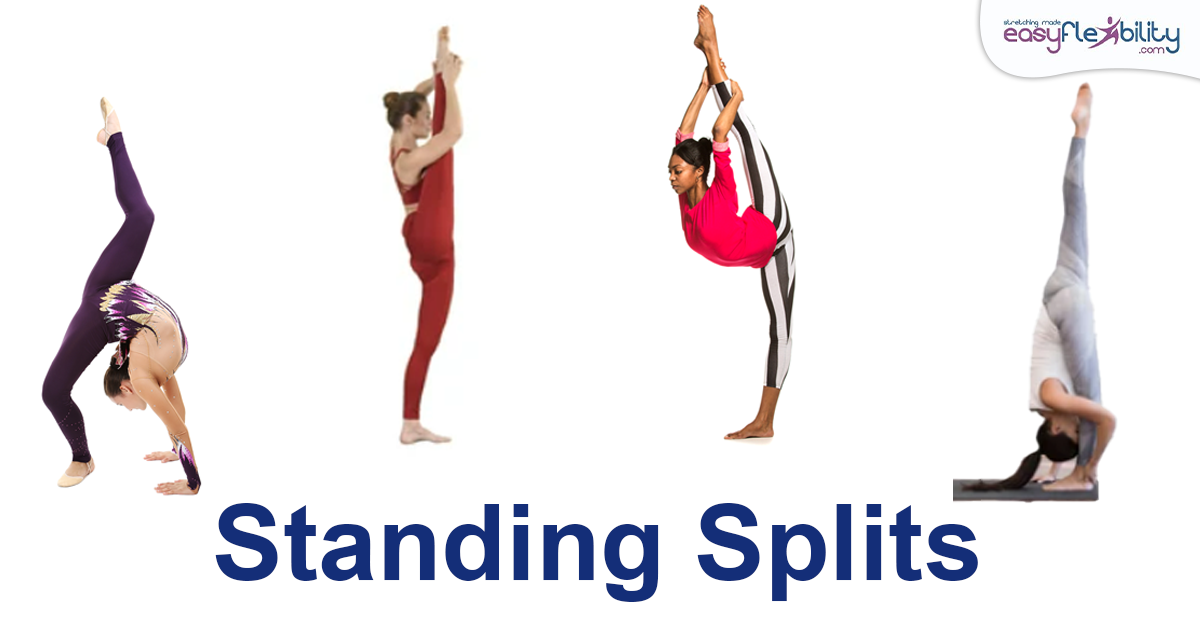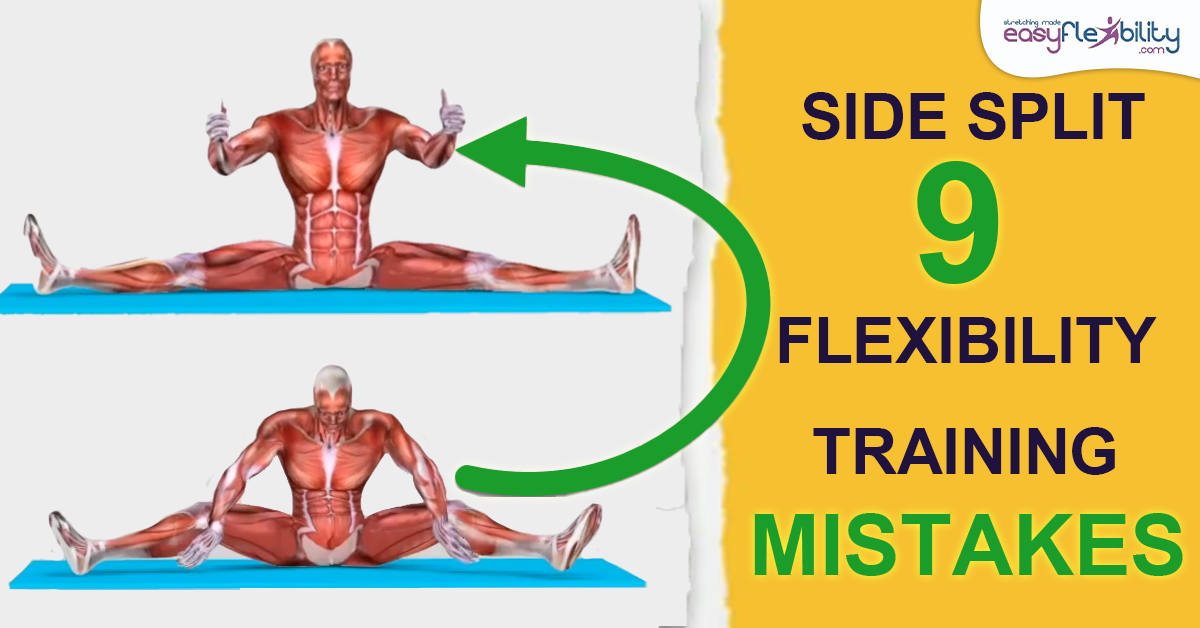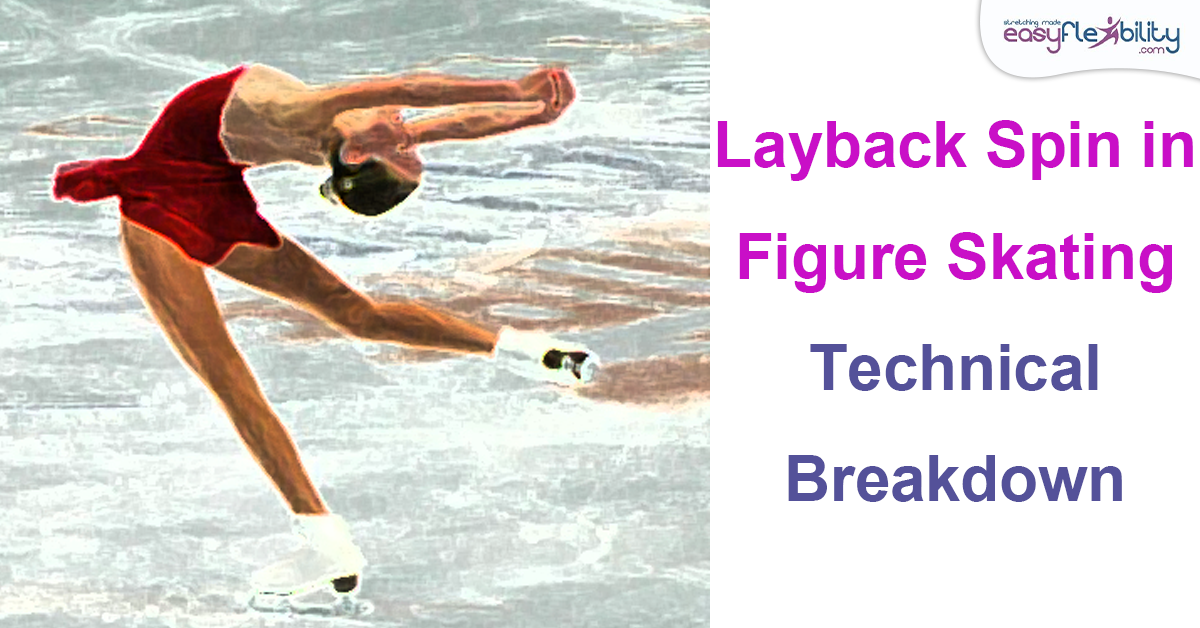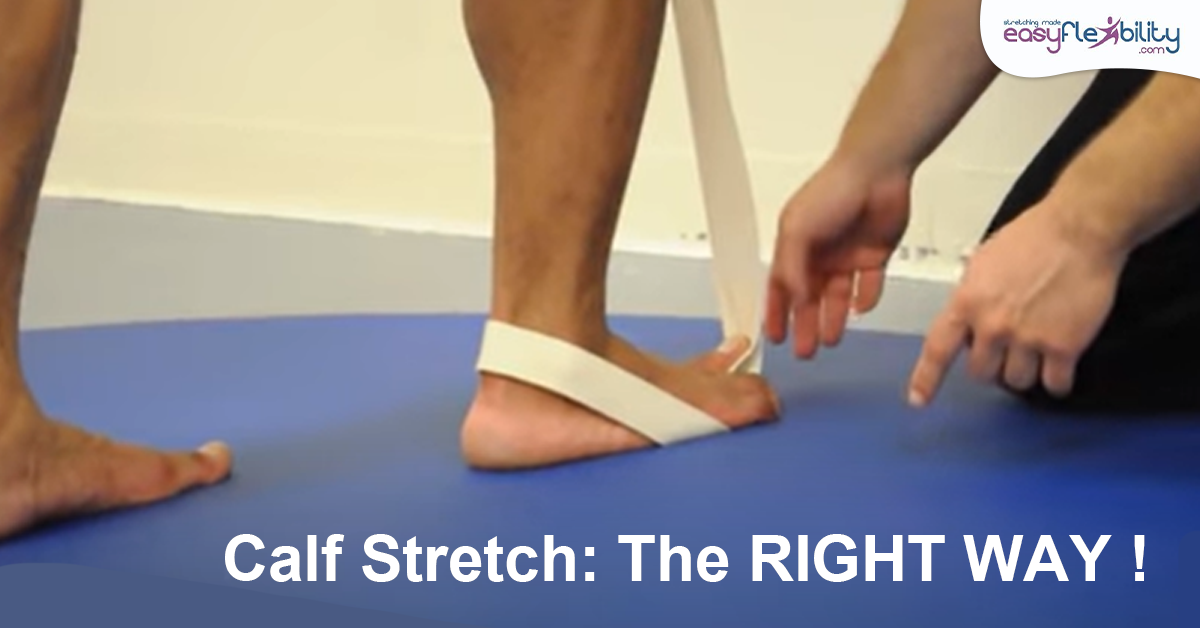Everything you ever wanted to know about the Over Splits
Posted by Paul Zaichik on
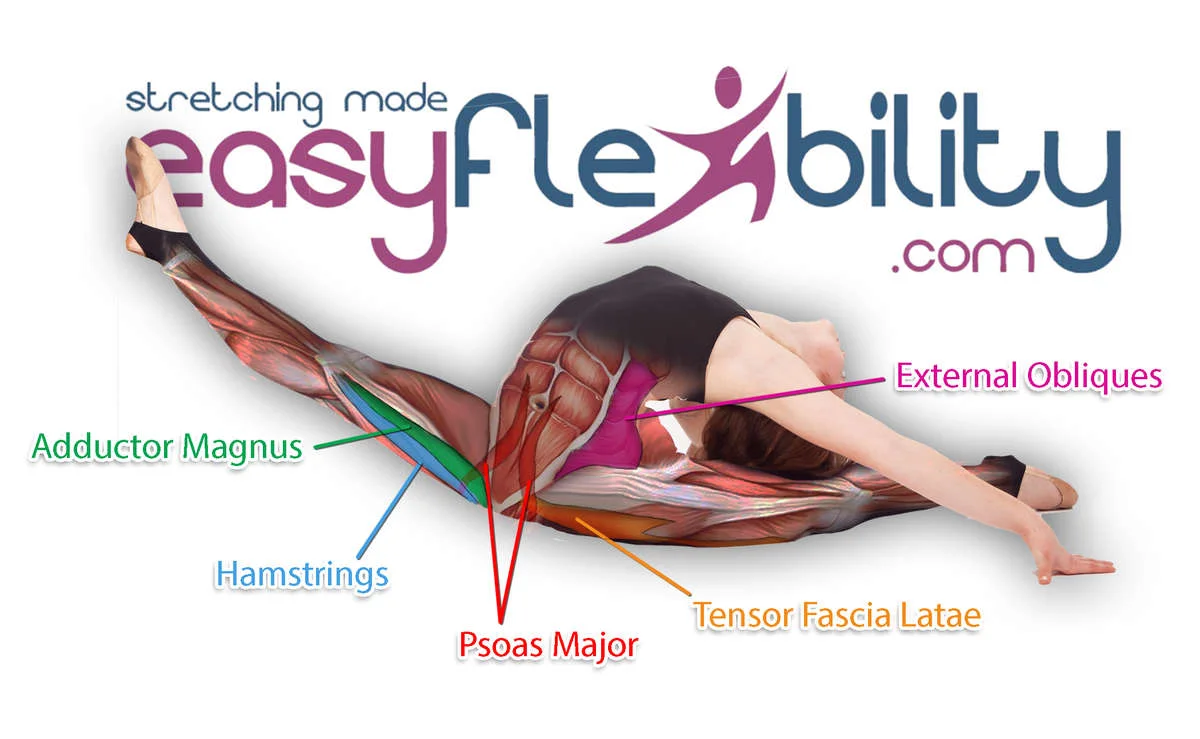
Everything you ever wanted to know about the Over Splits.
If you're looking for information on how to do an oversplit, when to do an over split, or how long will it take to get an over split. You probably already know what an over split is. Over the many years of training various athletes, I got many questions about the over splits. Today I will answer many of the burning questions regarding the oversplit. Let's get to it.
Should you work on developing an over split?
If you perform a skill which requires a split, you absolutely should develop an
over split. Regardless if this is a front split or a side split, open front split, true front split, center split or middle split. If you are doing a split in your jumps or standing positions, the skill that you are performing which requires a split will greatly benefit from you being able to over split in your training.
over split. Regardless if this is a front split or a side split, open front split, true front split, center split or middle split. If you are doing a split in your jumps or standing positions, the skill that you are performing which requires a split will greatly benefit from you being able to over split in your training.
To have good active flexibility, you need to have even better passive flexibility
In very simple terms, to have good active flexibility, you need to have even better passive flexibility. So if you are a dancer, a gymnast or a cheerleader, and you jump and you do a split in the air and you want to do it with control, not just quickly bring the legs apart and together, but you want to do it with control. The muscles that will be pulling the legs back down will activate together with gravity. And it's going to be very difficult to hold the legs for that extra split second in the air in extended position to give you that edge.
However, if you can do an over split, the muscles that will pull the legs back together are not going to pull that hard anymore. And your split will look a lot more beautiful and effortless. And of course, this applies to any sport. A martial artist doing a split that requires an active form of the split. A cheerleader, a pole dancer or a figure skater. Or any other sport.
However, if you can do an over split, the muscles that will pull the legs back together are not going to pull that hard anymore. And your split will look a lot more beautiful and effortless. And of course, this applies to any sport. A martial artist doing a split that requires an active form of the split. A cheerleader, a pole dancer or a figure skater. Or any other sport.
If you're still not sure about the relationship between active and passive flexibility you can do a simple test.
If you're still not sure about the relationship between active and passive flexibility you can do a simple test. To do so, stand up straight and lift a straight leg in front of you and see how high you can hold it. Not just lift it, but actually hold it. That is your active flexibility.
Now ask a friend to lift it a little bit higher. They will be able to lift it higher, but the second that they let go, your leg will come crashing down low again. So when they help you to lift the leg for you, that is your passive flexibility. You can consider you over split a passive flexibility to your split if your split is an active flexibility technique.
On the other hand, we have a cold split. A cold split on the floor of 180 degrees means that when you are warmed up, you are over splitting. Because, if you can do a 180 degree split on the floor when you are warmed up, you are not going to be able to do a 180 degrees split when you are cold.
Now ask a friend to lift it a little bit higher. They will be able to lift it higher, but the second that they let go, your leg will come crashing down low again. So when they help you to lift the leg for you, that is your passive flexibility. You can consider you over split a passive flexibility to your split if your split is an active flexibility technique.
On the other hand, we have a cold split. A cold split on the floor of 180 degrees means that when you are warmed up, you are over splitting. Because, if you can do a 180 degree split on the floor when you are warmed up, you are not going to be able to do a 180 degrees split when you are cold.
Side, Open Front & True Front Splits Strength & Flexibility Training at Home
COMPLETE COMBO - 3 ADVANCED PROGRAMS
Learn how to do a Side, Open Front and True Front Split at home with a proven method that is guaranteed to learn new set of ZST's and Supporting Exercises to help get you beyond the 180 degree split!.
An over split can protect you from injuries.
So an over split also becomes a protective measure. If for some reason, at some point you fail to warm up properly having an over split will protect you from injury when you're doing a regular split on the floor, because your muscles would not be at the end ranges. Of course, it's always best to warm up properly, but sometimes things happen.
How to do an over split?
The next question is how to do an over split. In the EasyFlexibility system, our
split programs are divided into three parts and the programs are not exactly
the same.
split programs are divided into three parts and the programs are not exactly
the same.
- Beginner is 0 to 135,
- Intermediate 135 to 180
- Advanced is 180 and up. Which basically means over splitting, which is 180 degrees and up.
Our EasyFlexibility programs will help you do an over split for a side (middle) split, true front split or open front split. Depending on your goals.
The schedule of doing an over split would usually be two times a week or three times a week. Some people do well with two times a week and some people do well with three times a week. Whatever schedule you did well with when you were working on first getting your 180 degree split. You will keep the same weekly
schedule for the over split.
The schedule of doing an over split would usually be two times a week or three times a week. Some people do well with two times a week and some people do well with three times a week. Whatever schedule you did well with when you were working on first getting your 180 degree split. You will keep the same weekly
schedule for the over split.
Are over splits dangerous?
Next question we often get is this: Are over splits dangerous? It's a strange question to ask, but it is in people's mind. It is a weird assumption that 178
degrees of a split is fine. 179 is fine, 100 is fine. But now 181 is dangerous.
If you are training for your over split properly 181 degrees, 185 degrees, 190 degrees are in the same safety group as 175 degrees. As long as you don't start bouncing, overstretching, forceful stretching or doing all kind of weird things that should not be done, your over split training is safe.
degrees of a split is fine. 179 is fine, 100 is fine. But now 181 is dangerous.
If you are training for your over split properly 181 degrees, 185 degrees, 190 degrees are in the same safety group as 175 degrees. As long as you don't start bouncing, overstretching, forceful stretching or doing all kind of weird things that should not be done, your over split training is safe.
Side, Open Front & True Front Splits Strength & Flexibility Training at Home
COMPLETE COMBO - 3 ADVANCED PROGRAMS
Learn how to do a Side, Open Front and True Front Split at home with a proven method that is guaranteed to learn new set of ZST's and Supporting Exercises to help get you beyond the 180 degree split!.
Can everyone do an over a split?
Another question that comes up is can everyone do an over a split? In other words, does everyone's body have the ability to do an over split? Well, the same mathematical question. Basically, if your body has the ability to get from 170 to 175 and 175 to 180, why would your body not have an ability to go from 180 to 185
However, the deeper you get, for example, in the front split, the more restriction you're going to be getting from the ligaments of the leg. And thus, more flexibility will be coming from the front leg and again, your body will start to go forward. For your body not to go forward, more flexibility will be coming from your back to keep your body upright. So, unless someone is forcefully stretching your ligaments doing an over split should not be a concern. Providing that your routine is balanced, meaning strength and flexibility is balanced and all the muscles and joints are protected by the proper strength exercises, your body should be okay in an oversplit position.
However, the deeper you get, for example, in the front split, the more restriction you're going to be getting from the ligaments of the leg. And thus, more flexibility will be coming from the front leg and again, your body will start to go forward. For your body not to go forward, more flexibility will be coming from your back to keep your body upright. So, unless someone is forcefully stretching your ligaments doing an over split should not be a concern. Providing that your routine is balanced, meaning strength and flexibility is balanced and all the muscles and joints are protected by the proper strength exercises, your body should be okay in an oversplit position.
Injuries can happen if there is forceful stretching without proper preparation.
Injuries can happen if there is forceful stretching without proper preparation, without giving the body enough time to heal, without strength and awareness support. Injuries can happen to someone who is at a 90 degree split and trying to get to 95 degrees. Proper training is proper training. And improper training is improper training. So as long as you are training properly for your over split, or your regular split you should be fine.
Are we stretching the same muscles in an over split that are in a regular split?
Another question we get is "Are we stretching the same muscles in an over split that we are in a regular split?" This is a very interesting question, and the answer is the following. Sometimes, certain muscles may not be restricting a split of one depth, but as you go deeper, these muscles may now become restricted.
What does that mean? Well, for example, someone may have flexible medial hamstrings and their lateral hamstrings maybe restricting their true front split to a
point. Perhaps that point is a flat split. That point might be 175 degrees, that point might be 185 degrees. But eventually the person goes deeper. It's no longer just the lateral hamstrings that are restricting, which of course have to be stretched further. If they were restricting 175 degree split, there will also be restriction at 180, 185 degree split.
Let's say that someone was able to do a side split or open front split before, or something else that stretched the medial hamstrings but not the lateral hamstring, and medial hamstrings did not restrict. Now, as the person goes deeper, they will start to restrict. And if it so happens that a person worked on specific muscles to get to a certain point and not on other muscles they cannot understand why all of a sudden they hit a wall.
Fortunately, in the EasyFlexibility programs ZST's isolate different muscles. So if a wall is hit, the ZST's will focus on the muscle that is a new restrictor, the same way that they are able to focus on the muscle that is restricting the movement to begin with.
For example, we see this often with Adductor longus, which restricts both flexion and extension and may not restrict more shallow range of motion. But as a person gets deeper into the splits or over splits all of a sudden Adductor longus becomes the restrictor and now has to be dealt with.
Of course, with specialized Zaichik Stretching Techniques all of this is very easy
to correct. If you are interested in specialized over split programs, take a look at advanced open form split, advanced to true front split and advanced side split programs below.
What does that mean? Well, for example, someone may have flexible medial hamstrings and their lateral hamstrings maybe restricting their true front split to a
point. Perhaps that point is a flat split. That point might be 175 degrees, that point might be 185 degrees. But eventually the person goes deeper. It's no longer just the lateral hamstrings that are restricting, which of course have to be stretched further. If they were restricting 175 degree split, there will also be restriction at 180, 185 degree split.
Let's say that someone was able to do a side split or open front split before, or something else that stretched the medial hamstrings but not the lateral hamstring, and medial hamstrings did not restrict. Now, as the person goes deeper, they will start to restrict. And if it so happens that a person worked on specific muscles to get to a certain point and not on other muscles they cannot understand why all of a sudden they hit a wall.
Fortunately, in the EasyFlexibility programs ZST's isolate different muscles. So if a wall is hit, the ZST's will focus on the muscle that is a new restrictor, the same way that they are able to focus on the muscle that is restricting the movement to begin with.
For example, we see this often with Adductor longus, which restricts both flexion and extension and may not restrict more shallow range of motion. But as a person gets deeper into the splits or over splits all of a sudden Adductor longus becomes the restrictor and now has to be dealt with.
Of course, with specialized Zaichik Stretching Techniques all of this is very easy
to correct. If you are interested in specialized over split programs, take a look at advanced open form split, advanced to true front split and advanced side split programs below.
Side, Open Front & True Front Splits Strength & Flexibility Training at Home
COMPLETE COMBO - 3 ADVANCED PROGRAMS
Learn how to do a Side, Open Front and True Front Split at home with a proven method that is guaranteed to learn new set of ZST's and Supporting Exercises to help get you beyond the 180 degree split!.

About the Author:
Paul Zaichik is an Exercise Science Expert, author of multitude of books, and the creator of Zaichik Stretching Technique (formely known as Kinesiological Stretching Technique). His speciality is flexibility training as well as body weight conditioning. His innovative method is designed to have maximum carry over into specific athletic techniques. Paul is the author of books and DVD’s on the topic of flexibility, martial arts and bodyweight training. Over the years, Paul Zaichik has worked with a variety of individuals including athletes, entertainers, and military personnel. His ElasticSteel Method of Athletic Conditioning programs, EasyFlexibility Programs and Zaichik Stretching Techniques are used world wide by both professional and amateurs with great success.
© ElasticSteel Corp., EasyFlexibility, Paul Zaichik, et. El., 2022. No part of the materials available through ElasticSteel.com, EasyFlexiiblity.com, site may be copied, photocopied, reproduced, translated or reduced to any electronic medium or machine-readable form, in whole or in part, without prior written consent of Paul Zaichik EasyFlexibility.com, Elasticsteel.com.. Any other reproduction in any form without the permission of Paul Zaichik EasyFlexibility.com, Elasticsteel.com is prohibited. All materials contained on this site are protected by United States copyright law and may not be reproduced, distributed, transmitted, displayed, published or broadcast without the prior written permission of Paul Zaichik, EasyFlexibility.com, Elasticsteel.com.
Share this post
- 0 comment
- Tags: best stretches for splits, doing the splits, doing the splits stretches, flexibility, how to stretch to do splits, kinesiological stretch, kinesiological stretching, splits oversplits, Training Flexibility
0 comment

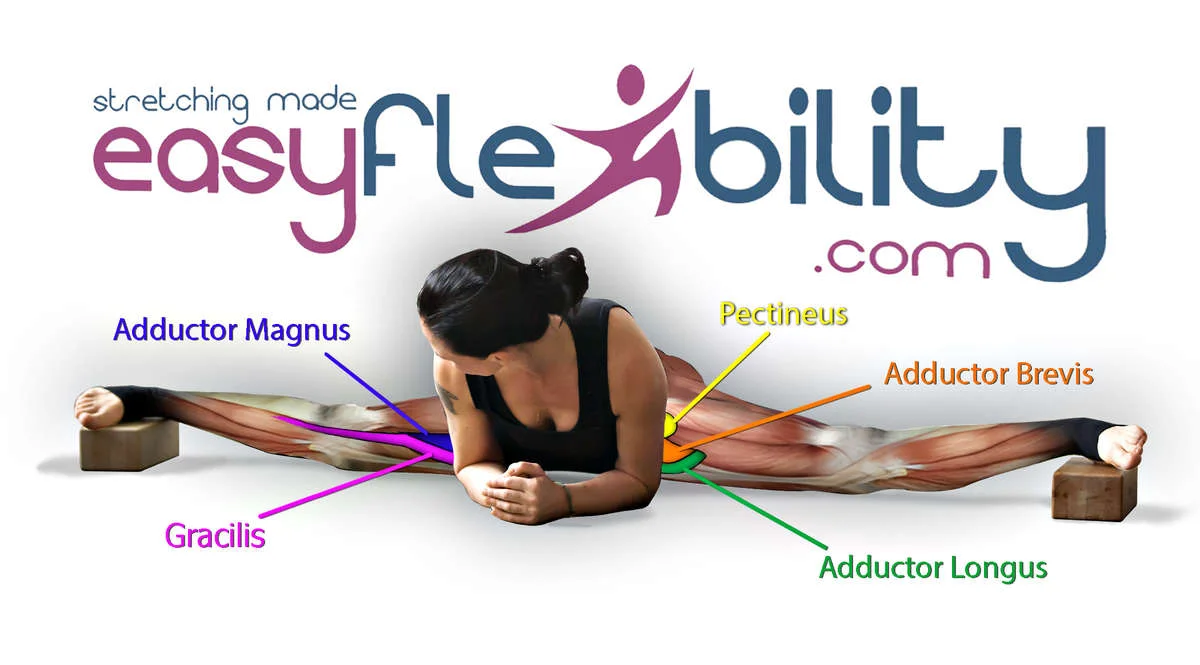

![Flexibility Training Program: Is it most beneficial standalone or with other fitness activities? [Case Study]](http://www.easyflexibility.com/cdn/shop/articles/336650424_545202031087374_5213276437981439590_n.png?v=1679586503)
